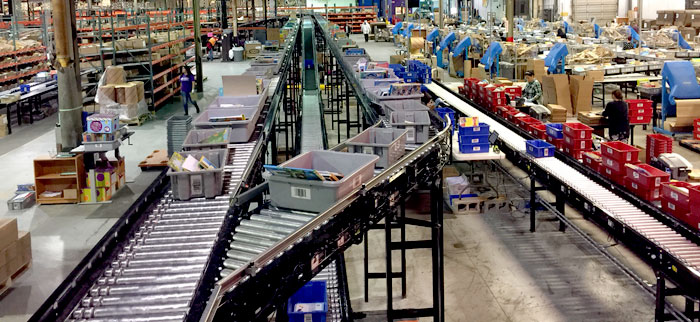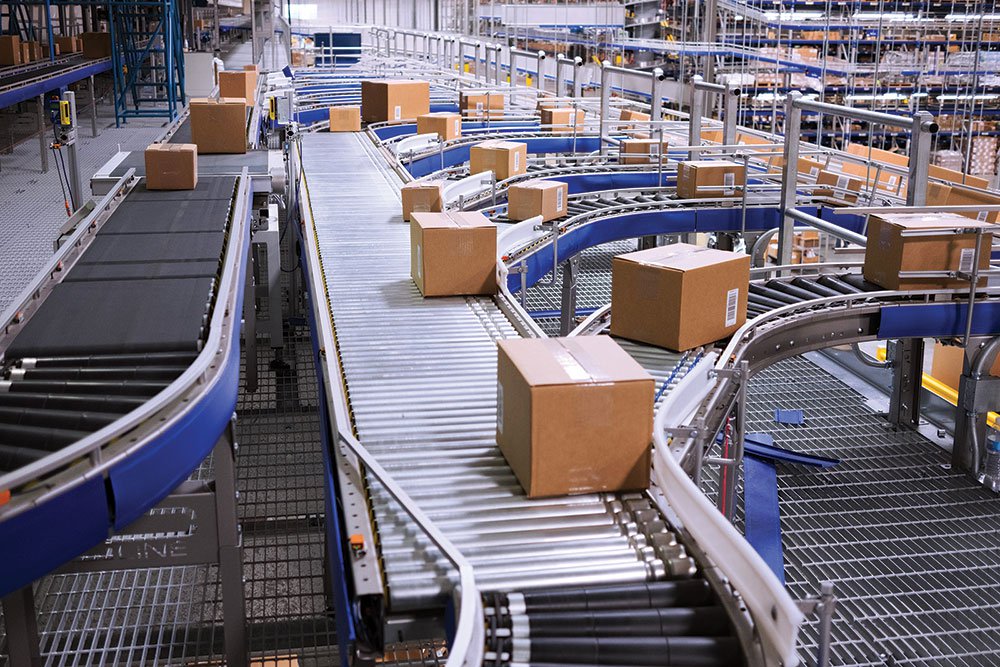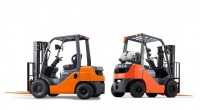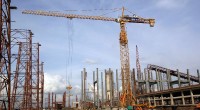How to Choose the Right Conveyor System for Your Business
From the delicate handling of medications and vitamins to the robust demands of automotive parts, conveyors ensure that businesses stay on beat with their demands. Behind the scenes, these silent workhorses ensure the smooth flow of materials, which improves your efficiency and productivity. However, with a myriad of options available on the market, it’s hard to select the right one for your needs.
Eliminate bottlenecks and boost productivity with a custom conveyor system that’s tailored to your exact needs. Choose from a range of sturdy roller materials and designs, including steel, nylon, and polyurethane. Need a system that effortlessly navigates tight corners or one that handles heavy-duty loads with finesse? You can have both in a high-quality and practical solution. Read on and discover the ideal choice for you and your business!
Type of Products You’re Using

Are you dealing with heavyweight industrial products like car parts or massive machinery components? If that’s the case, you need conveyors made of sturdier materials like steel rollers that can handle the heavy lifting without taking damage. On the other hand, if your products are more delicate, like glassware or intricate electronics, you don’t want equipment that handles them like a bull in a china shop. Choose gentler materials with soft and smooth surfaces, like PVC rollers, to ensure your fragile items get the red carpet treatment.
Conveyor Type
You wouldn’t use a sledgehammer to hang a picture. Similarly, picking the right system will make a lot of difference in the efficiency of your business. So, what different kinds of conveyors are there?
- Gravity system: This is the laid-back option, great for products that roll along on their own. It resembles a lazy river – you just load your goods, and let gravity do the work;
- On the other hand, a powered one has motors and gears to keep things moving, even against the flow. This machine tackles inclines and heavy loads with ease;
- If you’re dealing with tight corners and need some fancy footwork, you’ll need a flexible machine that dances its way through twists and turns. This is perfect for those spaces where a straight-line machine just won’t cut it;
- Then there’s the roller conveyor system, which is like the red carpet for your products. It has rollers that allow items to glide along effortlessly. Ideal for those goods that need a gentler treatment, avoiding any scuffs or scratches;
- And don’t forget about the belt option. Whether you’re moving boxes, bags, or odd-shaped items, this machine readily takes centre stage.
Length and Width

The width of your machine shouldn’t be too short, as your products could fall and get damaged, and you don’t want it too long, taking up too much space. You need enough space for them to move without knocking into each other. Are they compact and slim or are they more robust, like heavyweight parts and tools? Tailor the dimensions to match the needs of your products. This will ensure everything flows seamlessly and efficiently. So, measure twice, choose wisely, and let your machine set the stage for a show-stopping performance in your business.
Load Capacity
The load capacity of conveyor systems in Australia refers to how much they can handle without taking damage. It’s like the weight limit on an elevator – exceed it, and you’re in for a bumpy ride. Each machine has its own strength – some lift massive loads with ease, while others are nimble and quick but with a limit to the weight they can swing around. If your business is dealing with lightweight and delicate stuff, like food products or medication, you’ll need a gentle conveyor. But, if you’re in the game of handling steel beams or engine parts, you want a sturdier device that flexes its muscles.
Safety Features
The proper safety features on your machine are much like the airbags in your car. You hope you never need them, but if things go haywire, you’re glad they’re there:
- First, there are emergency stop buttons. If something’s going south, you hit that button, and boom, everything grinds to a halt;
- Then there are those photo eyes that keep a watchful eye on your products. If something gets too close or out of line, it signals an early warning system;
- And don’t forget about those guards and covers – the conveyor’s suit of armour. They make sure nothing gets snagged or caught in the machinery, keeping your products safe and sound.
When the unexpected happens, you’ll be grateful for these convenient features. So, when picking a conveyor, this is an essential factor you should keep in mind to keep your products in top shape. Because in the grand scheme of business, safety is the ultimate tightrope walk, and you want your machinery doing it with a safety net, not without.
Power Requirements
Lastly, you want your conveyor to rev up without draining your wallet or causing a power outage. Choose an energy-efficient system that sips power, coasts along smoothly, and does its thing without guzzling electricity without restraint. Efficient, cost-effective, and environmentally friendly – they’re like the Teslas of the conveyor game.
On the flip side, there are those power-hungry machines that feel like they’re running on rocket fuel. They get the job done, but you’re watching your electricity bill climb like it’s training for a marathon. Choosing the right machine means finding the sweet spot between a golf cart and a race car. You want a system that meets your operational needs without cranking up your energy bill.



